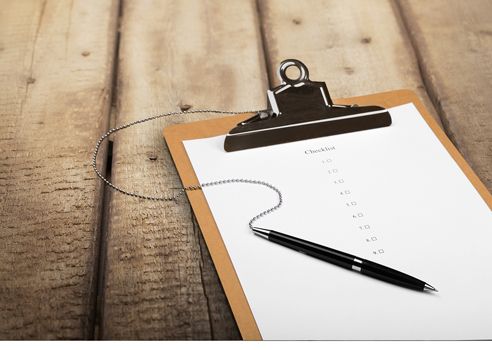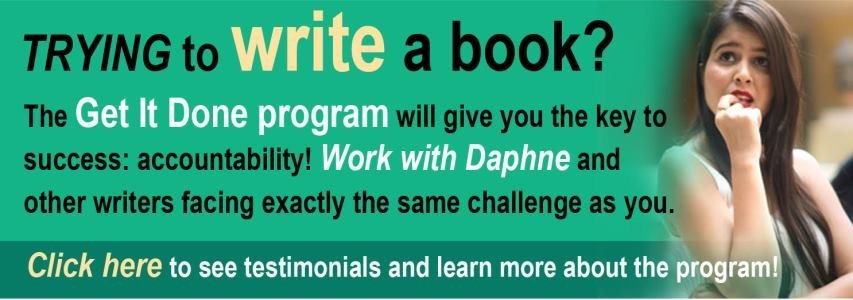Reading time: About 5 minutes (faster to scan)
Do you ever write down what you need to accomplish? Here’s why all writers need checklists…
Before I get into today’s column, can I ask for a quick favour?
I’m looking for testimonials from people who get value from my newsletter. If that describes you, would you consider giving me one to two sentences describing what you like about it? Oh, and please be sure to include a photo of yourself. (If you include a hotlink for your website or Substack page, I’d be happy to use that as well.)
Just email your short testimonial here, attaching your photo. Thanks so much! Now, on with this week’s column…
I recently mentioned in a by-the-way sort of manner that I had a 17-item list of tasks I perform first thing every morning. Here’s what amazed me: More than two dozen people emailed me asking for a copy of this list. (Really, it’s not that interesting!)
Perhaps it was this experience that predisposed me to stumble across a blog post by another writer (sorry, I didn’t note the URL or who wrote it) mentioning a 2009 book with the intriguing title The Checklist Manifesto. I raced to the library to borrow it because the author, Atul Gawande, is a favourite of mine.
A surgeon at Brigham and Women’s Hospital in Boston, an associate professor at Harvard Medical School and a staff writer for the New Yorker, Gawande appears to be one of those Renaissance Men who can accomplish dozens of different tasks and do them all unbearably well. I like to imagine he carves larger-than-life “Davids” in his spare time, or perhaps he composes symphonies to relax.
The Checklist Manifesto arose out of Gawande’s work for the World Health Organization where he has headed the Safe Surgery Saves Lives program, which has reduced deaths and complications following surgery worldwide by more than 30 per cent.
How did he manage this remarkable feat? With a checklist. Really. Gawande’s book recounts this fascinating story, presenting compelling evidence from two worlds seemingly at odds with medicine: building skyscrapers and flying airplanes. And, I suggest, what engineers and flight officers and now doctors have done should also work for writers. But first, let me give you a quick overview of Gawande’s book.
The job of building a skyscraper requires vast — and widely diverse — skills and careful planning. Imagine the thousands of people who would die if such a building were to collapse. Not only would the event kill the people inside, but the falling debris would crush those standing outside as well. (Remember the collapse of the World Trade Center?)
My brother-in-law, Doug, is a retired engineer who worked on the so-called “building envelope” of towers and, from talking to him, I already knew some of the points Gawande addressed. For example, engineers always work with lists. One of Doug’s regular jobs was to review deficiencies against the building plan and make sure they were all addressed. Engineers must ensure the buildings they oversee meet city codes and also the demands of the owner/developer. Doug has two post-secondary degrees and more than 30 years’ experience with building. So why did he work from a list — something a 12-year-old could do? It’s because a list allowed him to operate without forgetting anything important.
Nowhere is this principle more important than with airline pilots. I didn’t know this before reading The Checklist Manifesto, but a key part of pilot training involves learning and following checklists. Imagine all the lives at risk in airplanes. In fact, imagine the 155 lives that were specifically at risk in US Airways Flight 1549 to North Carolina in 2009. This was the flight that famously landed in the Hudson River after three Canada geese had choked both engines.
The pilot was widely lauded for being able to land the plane — in three minutes — without killing anyone. But what the public didn’t know was that he was simply following a list. Of course, having the mental power to stick to the list, when you’re afraid you and your passengers might die, is no small feat. But pilots train for this sort of situation and investigators use previous crashes to develop rigorously tested to-do lists that work. With Flight 1549, the pilot even had time to walk through the cabin to double-check that no one remained on the plane before he made his own thoroughly safe exit.
When Gawande thought to develop checklists for surgeons, he used the models of skyscraper builders and pilots to guide his own thinking. Here is what he found:
- Checklists should focus on only the most important tasks — ideally, five to nine items. If they are any longer, people might want to skip them. At the same time, they shouldn’t leave off anything important. In the six-item checklist for engine failure of a single-engine Cessna, the number-one instruction is to FLY THE PLANE.
- There are two types of checklists: the Do-Confirm and the Read-Do. The former is based on memory; the latter comes from a written list that you check off. Neither is better than the other. You just use them in different situations.
- The checklist must be tested in the real world and then adjusted. It’s not enough to follow someone else’s list — after all, your circumstances may differ. Test it and change it in response to the real-life issues you will inevitably encounter.
- There is an important “social” aspect to checklists. In airplanes, and now in surgery, team members begin by introducing themselves to each other and stating their responsibility. (In fact, Gawande credits the successful landing of Flight 1549 to this step. When the disaster occurred, the pilot said, “My aircraft,” to his co-pilot, showing that he was taking over the controls. “Your aircraft,” the co-pilot replied immediately, agreeing that he was ceding control. Gawande argues convincingly that if the two pilots weren’t such a close working team, they could have wasted considerable time on this very simple step.)
So, how on earth does this relate to writing? Well, as I read this book, I realized that I’ve been using checklists for decades. I did it instinctively to make my job easier and more effective. Now, however, I understand that they’re useful in the creative world of writing, where it’s easy to get caught in the moment and forget something important.
Here are the checklists I use. I generally perform them as “do-confirm” lists, but when I’m worried I might forget something (the proofing checklist falls into that category) I turn them into “read-do” lists. Study my checklists and see if you can adapt them to suit your own working challenges. Note that the order in which you do the tasks is also important:
Writing checklist
- Do research.
- Prepare at least one mindmap, maybe more.
- Write without editing in 30-minute increments (using a timer, preferably one that ticks, so you can hear it).
Editing checklist
- Take a break after writing (at least one hour, ideally more).
- Read for content (logic, flow, interest and persuasiveness).
- Run story through ProWritingAid (free for 500 words or fewer).
- Ensure average sentence length is between 14–18 words.
- Look for and eliminate clichés.
- Look for and reduce passive voice.
- Look for connectors and try to add more.
- Check rhythm by reading aloud.
- Check grammar.
- Check spelling.
Proofreading checklist
- Take a break after editing (at least one hour, ideally more).
- Print out story (or, if this is too difficult, change the typeface and the font size so that the text looks dramatically different).
- Read out loud while proofing (reading aloud increases the chances that you’ll catch errors).
- Check all URLs to ensure they work.
- Double-check all dates (ensuring, in particular, that dates match days — e.g., is May 30 really a Friday or is it a Saturday?).
- Double-check spelling of names and people’s titles.
- Double-check names of books and movies.
- Look for any errors you habitually make (for some people this is anything to do with numbers, for me, it’s item 7, above — I often get book titles slightly wrong).
Web publication checklist
- Run through spellcheck and look manually for homonyms.
- Look for any errors you habitually make.
- Check keywords (are they optimized for Google?).
- Check tags (do they make sense?).
- Check all hotlinks to ensure they work.
- Check URL for this piece (is it short and succinct?).
- Check photo (is it the best one you can use? Do you have copyright permissions?).
- Double-check headline for typos.
Print publication checklist
- Check folios (page numbers).
- Check all headlines, reading aloud for typos (reading aloud increases the chances that you’ll catch errors).
- Check all captions, reading aloud. Pay particular attention to names and ensure they match the person in the photo.
- Check resolution of all photos (300 dpi is required for print).
- Check all “turns” (when you have an instruction such as “see page 3,” does the correct story actually continue on page 3?)
- Check date on the front page and any other pages where it’s repeated.
- Check colour correction.
My number-one takeaway from reading Gawande’s book? I’d never adequately considered the value of “social” factors in writing and editing. For anything requiring teamwork, it’s a good idea to begin your project by reviewing who’s doing what and the deadlines involved.
If you liked this post, you’ll also like 9 mental models to write smarter not harder.
An earlier version of this post first appeared on my blog on Feb. 16/16.
*
Need some help developing a better, more sustainable writing or editing routine? Learn about my three-month accountability program called Get It Done. There is turn-over each month, and priority will go to those who have applied first. You can go directly to the application form and you’ll hear back from me within 24 hours.
*
My video podcast last week addressed how to write sentences with more impact. You can watch the video or read the transcript, and you can also subscribe to my YouTube channel.
*
Do you ever use checklists for writing or editing? How? We can all learn from each other, so please, share your thoughts with my readers and me in the comments section, below. If you comment on today’s post (or any others) by April 30/25 , I’ll put you in a draw for a digital copy of my first book, 8 1/2 Steps to Writing Faster, Better. To enter, please scroll down to the comments, directly underneath the related posts links, below. You don’t have to join Disqus to post! Read my tutorial to learn how to post as a guest. (It’s easy!)


